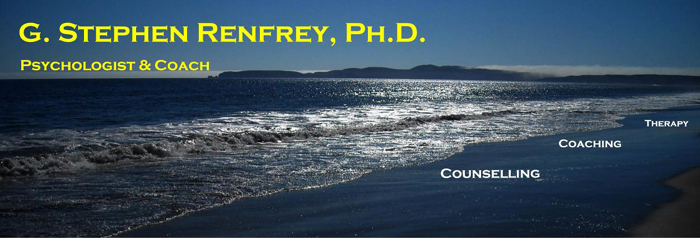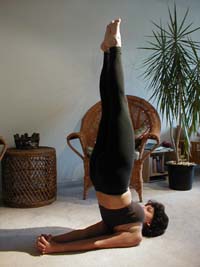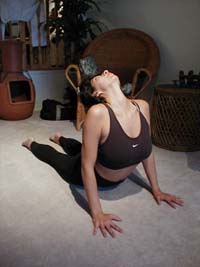
Benefits of YogaOnce an obscure Eastern practice, yoga is now well integrated into our culture. Tens of millions have had at least one personal experience with it. A Sanskrit term, “yoga” can be translated to mean many things, including a yoking, an art form, fitness, meditation, and contemplation. The most widely accepted translation for our purpose, however, is "union.” Here, it refers to a “union of mind and body" that practising yoga can cultivate. Originating in ancient India perhaps as much as 6000 years ago, it was developed over many generations by spiritual seekers who would sit and meditate for many hours at a time. These spiritual pilgrims needed a means of keeping their bodies strong, healthy, and flexible for their endeavours and through centuries of experimentation and practice, what emerged were the physical movements and postures most often associated with yoga: the asanas. The practice of asanas continued to develop over the ages and this is no less so today. Yoga caught on in the West during the 50's, accelerated in popularity in the 60's, and enjoys an explosive popularity today. It has also been estimated that there are more yoga practitioners in California alone than in all of Mother India. With this growth came the development of the many forms of physical yoga being taught in studios around the world. So, to what does yoga owe its great appeal ? In its fullness, yoga can be a primary means to mental, physical, and spiritual development and well-being. At this level of practice, the asanas are only a part of a more comprehensive set of meditative, personal, and social practices that form a highly tuned prescription for the good life. For most who might venture to try yoga, however, their interest is not likely to press beyond the physical asanas, and perhaps meditation. The benefits of meditation is discussed in a separate article, so from here I’ll highlight some of the benefits of the asanas themselves. 1. Relaxation:Yoga is one of the finest and most effective means of inducing relaxation. Mental and physical tension flow hand in hand: a tense body leads to a tense mind and vice versa. Conversely, a relaxed body leads to a relaxed mind. The gentle stretching of yoga releases physical tension. When practised with a soft mental focus on the pleasurable sensations generated and with non-attachment to the drift of thoughts, yoga can induce a state of deep, harmonic relaxation that can last for many hours beyond the practice. Further, a heightened awareness of body tension is part of the “physical intelligence” that results from regular yoga practice. With this greater awareness come the ability to detect and respond to tension early, thereby enabling the practitioner to prevent tension build-up. This is stress management at its finest. 2. Personal Development:The practice of yoga tunes your awareness inward and allows greater sensitivity to thought, feeling, and intuition. At the same time, it promotes a gentle detachment from each of these, enabling them to be experienced in the purest form. In many traditions, such ability is the cornerstone of enlightenment and personal development. With continued practice, this can lead to greater inner intelligence and grace. 3. Physical Wellness:Perhaps most controversial because it often appears to conflict with Western medicine, many yogis and yoginis assert that the varied asanas have healing effects on the diseases of the body. The explanations for yoga’s healing properties often refer to renewing the flow of energies through the body and the stimulation of the glands, and organs. Though such explanations tend to raise the eye-brows of Western thinkers, the fact that yoga is perhaps the most ancient healing and wellness practice known, that it has flourished for millennia, would argue for an open mind. In the least, it seems unlikely that combining Yoga with Western medicine in the treatment of disease would result in harm. 4. Flexibility:Flexibility is a function of the ability of muscle
groups to lengthen. With injury and age there is a tendency for
flexibility to decrease, leading to stiffness, loss of mobility
and agility, and a greater proneness to injury. Picture in your
mind, if you will, the litheness of a typical 22 year old with the
stiffness of a typical 72 year old. It’s a stark comparison
to make. The good news is that this is not inevitable: much of this
crippling its is due to the sedentary nature of modern living. To
compensate for the elimination of natures way of keeping us strong
and flexible throughout our years (i.e., the need to frequently
use our bodies rigorously for survival), special efforts can be
made to give the body the mechanical nourishment it requires. Yoga
has stood the test of time as a means for this. What sort of stretching is best? Research and practice indicate that a gentle but firm stretching for 90 to 120 seconds results in enduring changes in the pliability of connective tissue and hence our flexibility. Yoga is the most effective, comprehensive system of stretching the whole body known. Do note, however, that the more vigorous forms of yoga practised in urban studios these days are popular because of their aerobic and strength building qualities. These forms can increase one’s flexibility, but the slower, gentler yoga forms that focus on holding the asanas for a time will be more effective. In summary, yoga is an ancient path to greater wellness that has stood the test of time, and can be a core ingredient to an integral lifestyle. It’s benefits have just been touched on above and it is the form of exercise that I most often recommend to clients and patients. It is important to realize that yoga is about doing. Like brushing your teeth, most of the benefits come from doing yoga on a regular basis, even for short periods. If you brush your teeth once a day, why would you not take the time to do something each day that will take care of the rest of your body? If you’d like to learn more about yoga and it’s benefits, check out the Yoga Journal Online. Happy stretching!
Copyright © 2002, G.S. Renfrey To obtain a copy of this article, click on the link below. It will open a PDF version in a new window which can then be saved. You may need to enable pop-ups from this site for this to happen. Download a PDF version of this article |
|


